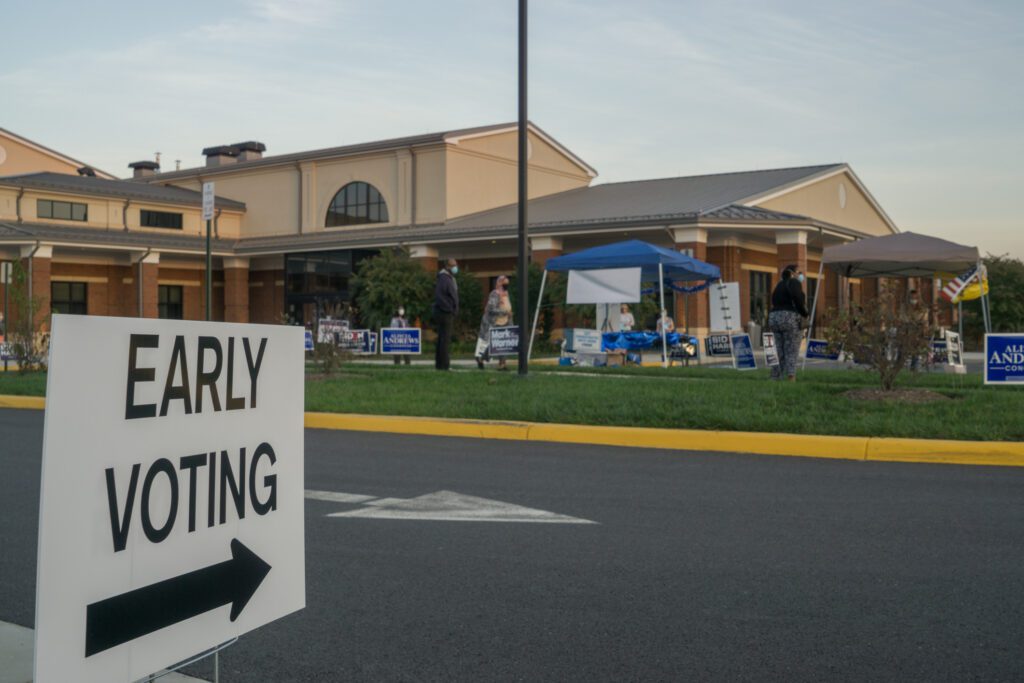To Keep Pace With a More Diverse Electorate, Progressives Need to Up Their Data Game

Voters of color hold the future of the nation in their hands. In 2020, we saw the most racially diverse electorate in history with turnout from voters of color, especially Asian and Latino voters, increasing by double-digit percentages.
Progressives need the landscape of electoral data to match the growth of our more diverse electorate. If we want to build a world where communities of color can build power and thrive, we have to dig deeper to understand what moves them and invest in tools and practices that account for the multi-faceted lives these voters live.
Unfortunately, prevailing data practices fall short of our need to more accurately reach and engage with voters of color at a time when they will play a critical role in deciding the outcome of the 2022 Midterm Elections.
In order to win at every level, we must change political data norms that routinely fail to deliver the impact and engagement for voters of color that progressive spaces promise. Without reforms, we risk losing these high-impact voters to deception and misinformation targeted to Black, Latino, and Asian voters.
Standard data practices can leave voters of color behind
By design, albeit unintentionally, many campaigns continue to institute data practices that entrench racially-biased and suppressive outcomes for already underrepresented voters of color across the country.
For example, when campaigns build their voter contact lists, they often use standard vote propensity parameters to narrow their lists. The parameters mean that anyone above or below the numbers a campaign chooses will automatically be removed from the contact list.
This standardization fails to account for historical voter suppression and institutional biases that result in voters of color scoring significantly lower in propensity than their white peers. As a result, many campaigns and organizations remove high-potential voters of color with low vote propensity scores, further entrenching the disparity in outreach between white and non-white communities. Over time, this practice leads to inequities in outreach and leaves a vacuum for disinformation, apathy, and disconnection from the political process.
Some organizations have found work-arounds in their targeting and analytics to improve specific outreach to voters of color, including surname matching, narrowing sources of demographic information, race confidence scores, and customized algorithms that maximize the number of voters of color in target lists beyond what any one strategy could accomplish. Although these are an impressive collection of reforms, work-arounds cannot not be the norm when it comes to reaching voters of color.
Centering voters of color in data can help build power
Progressives have a responsibility to center voters of color in our data. But what does that mean?
All organizing is relational, meaning that organizing is founded on the building of relationships between a voter and the person reaching them. Thanks to systemic discrimination in our democracy, news coverage, and other institutions, for communities of color trust in close friends and family for information remains far higher than in elected officials or news sources. So relational organizing remains even more critical to delivering accurate, timely information. We must connect volunteers with members of their own communities to deliver authentic messages that meet the moment. Similarly, by using surveys and issue-based analyses, we can improve segmented ads and communications by community to ensure the right message is reaching the right people.
We must also fundamentally change our institutional approaches to data management and analytics. In addition to building contact lists comprising only voters of color and disaggregating our lists by ethnicity, at my organization, we use different voter propensity scores for each racial group and geography.
This ensures that voters of color aren’t systematically left out of our programs. We analyze the disparities in declining support for Democratic candidates among racial and gender groups to better understand which communities require more persuasion and which require mobilization. We also combine surname and first name data with voter file data and race or ethnicity confidence scores to both improve our target lists and explore opportunities for community-based relational organizing work.
Collectively, these data practices will result in not only reaching voters of color and infrequent, high-potential voters at higher rates, but also delivering compelling, persuasive messages that build community power. For example, we could segment a list of Francophone Black voters in the Atlanta metro area through surnames and scores to recruit relational volunteers with persuasive, actionable French-language ads.
Those volunteers would then reach friends and family in their community with messages they help develop from surveys, canvassers, research and lived experience. The result would be improved likelihood for those communities to turn out on Election Day and stay involved in civic life beyond one cycle.
We’re certainly not the first to use this toolbox to improve our engagement with communities of color. As progressives, we need to start sharing more best practices to produce a more representative, empowered, and activated voter of color electorate in every community.
Benjamin Oh is an electoral data manager for Community Change Action, a national organization that builds the power of low-income people, especially people of color, to fight for a society where everyone can thrive.


